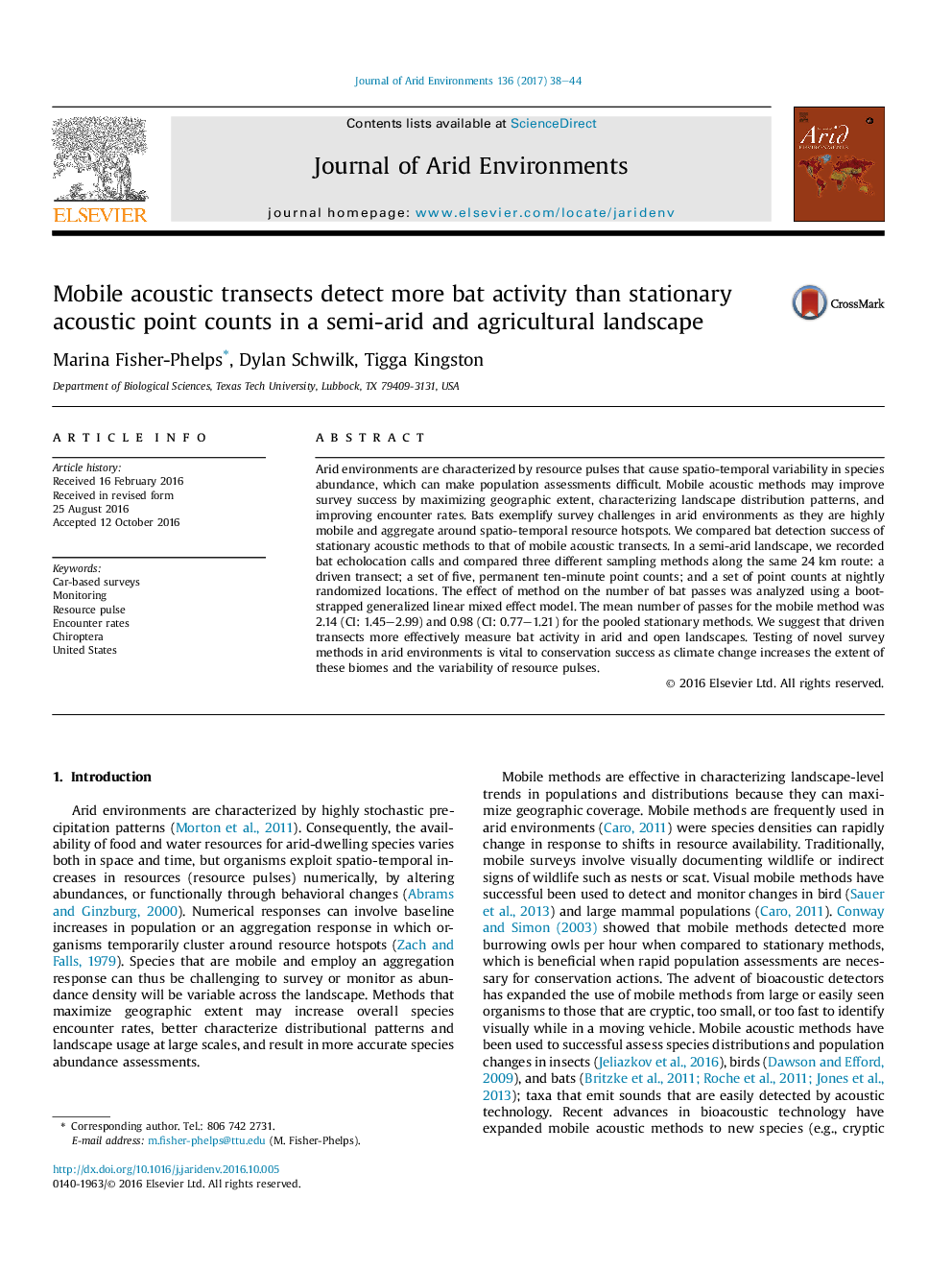| کد مقاله | کد نشریه | سال انتشار | مقاله انگلیسی | نسخه تمام متن |
|---|---|---|---|---|
| 6303089 | 1618223 | 2017 | 7 صفحه PDF | دانلود رایگان |
عنوان انگلیسی مقاله ISI
Mobile acoustic transects detect more bat activity than stationary acoustic point counts in a semi-arid and agricultural landscape
ترجمه فارسی عنوان
ترانسکت های آکوستیک موبایل، فعالیت های خفاش بیشتری را نسبت به تعداد نقطه های آکوستیک ثابت در یک منظره نیمه خشک و کشاورزی آشکار می کنند
دانلود مقاله + سفارش ترجمه
دانلود مقاله ISI انگلیسی
رایگان برای ایرانیان
کلمات کلیدی
موضوعات مرتبط
مهندسی و علوم پایه
علوم زمین و سیارات
فرآیندهای سطح زمین
چکیده انگلیسی
Arid environments are characterized by resource pulses that cause spatio-temporal variability in species abundance, which can make population assessments difficult. Mobile acoustic methods may improve survey success by maximizing geographic extent, characterizing landscape distribution patterns, and improving encounter rates. Bats exemplify survey challenges in arid environments as they are highly mobile and aggregate around spatio-temporal resource hotspots. We compared bat detection success of stationary acoustic methods to that of mobile acoustic transects. In a semi-arid landscape, we recorded bat echolocation calls and compared three different sampling methods along the same 24Â km route: a driven transect; a set of five, permanent ten-minute point counts; and a set of point counts at nightly randomized locations. The effect of method on the number of bat passes was analyzed using a bootstrapped generalized linear mixed effect model. The mean number of passes for the mobile method was 2.14 (CI: 1.45-2.99) and 0.98 (CI: 0.77-1.21) for the pooled stationary methods. We suggest that driven transects more effectively measure bat activity in arid and open landscapes. Testing of novel survey methods in arid environments is vital to conservation success as climate change increases the extent of these biomes and the variability of resource pulses.
ناشر
Database: Elsevier - ScienceDirect (ساینس دایرکت)
Journal: Journal of Arid Environments - Volume 136, January 2017, Pages 38-44
Journal: Journal of Arid Environments - Volume 136, January 2017, Pages 38-44
نویسندگان
Marina Fisher-Phelps, Dylan Schwilk, Tigga Kingston,
